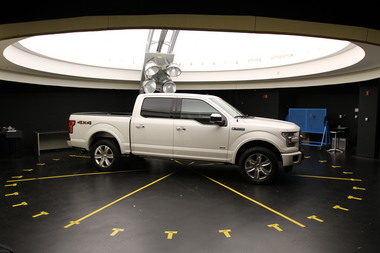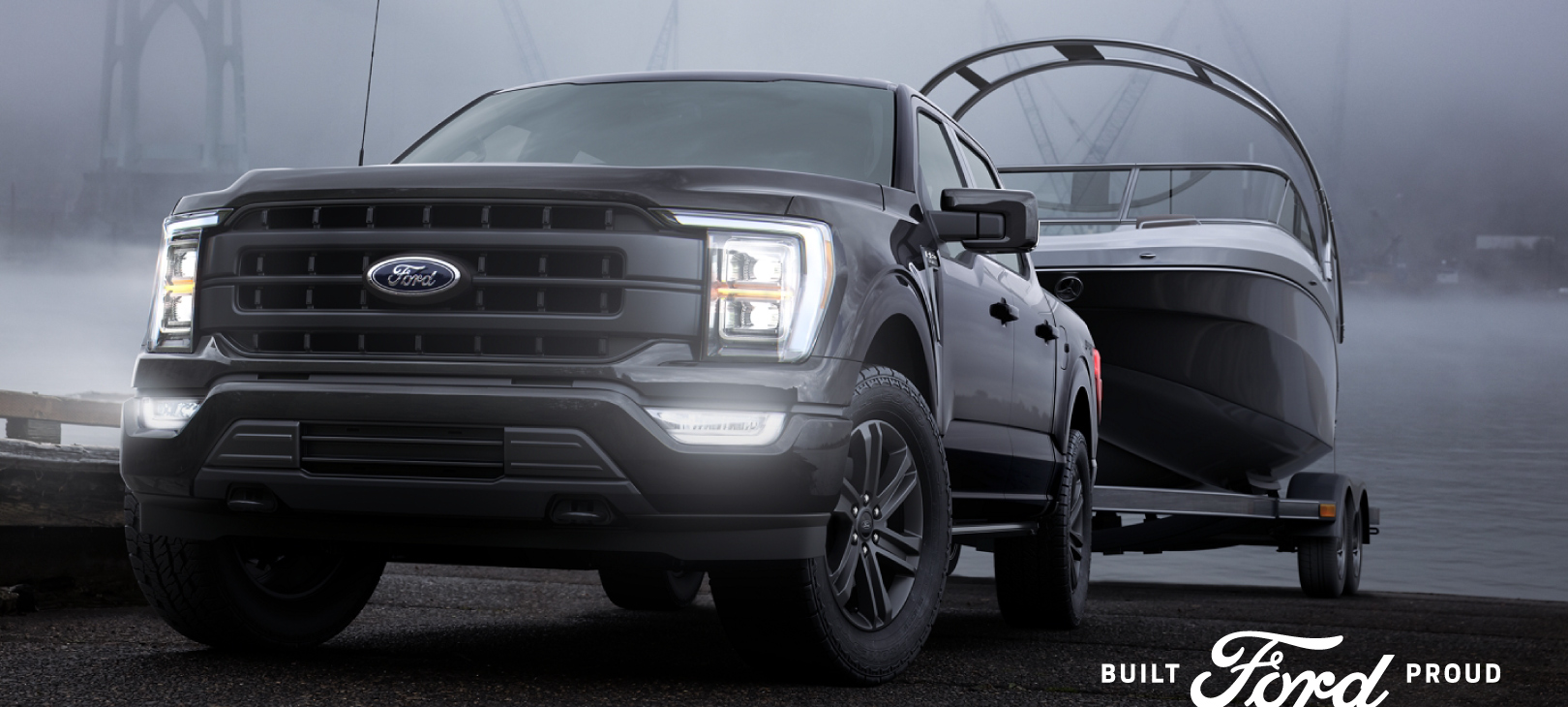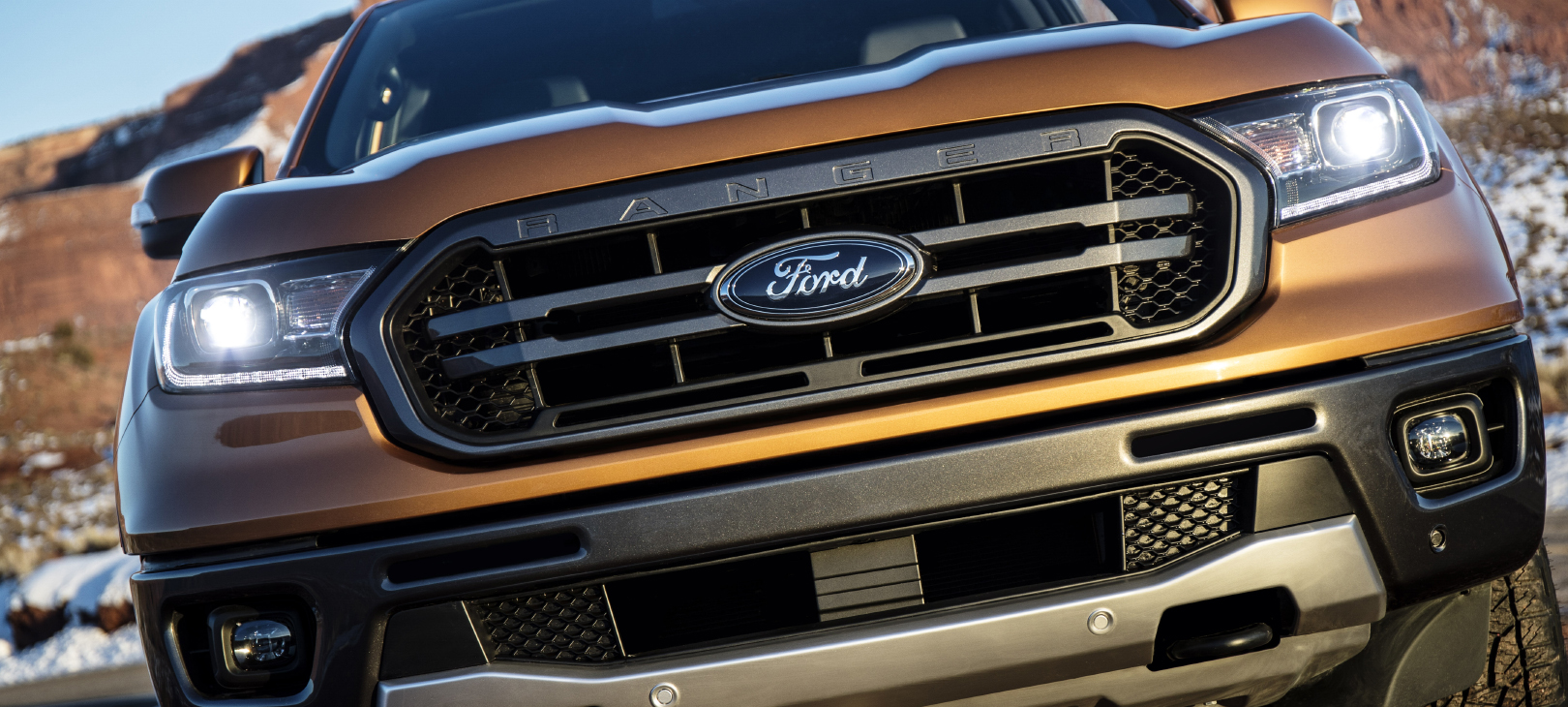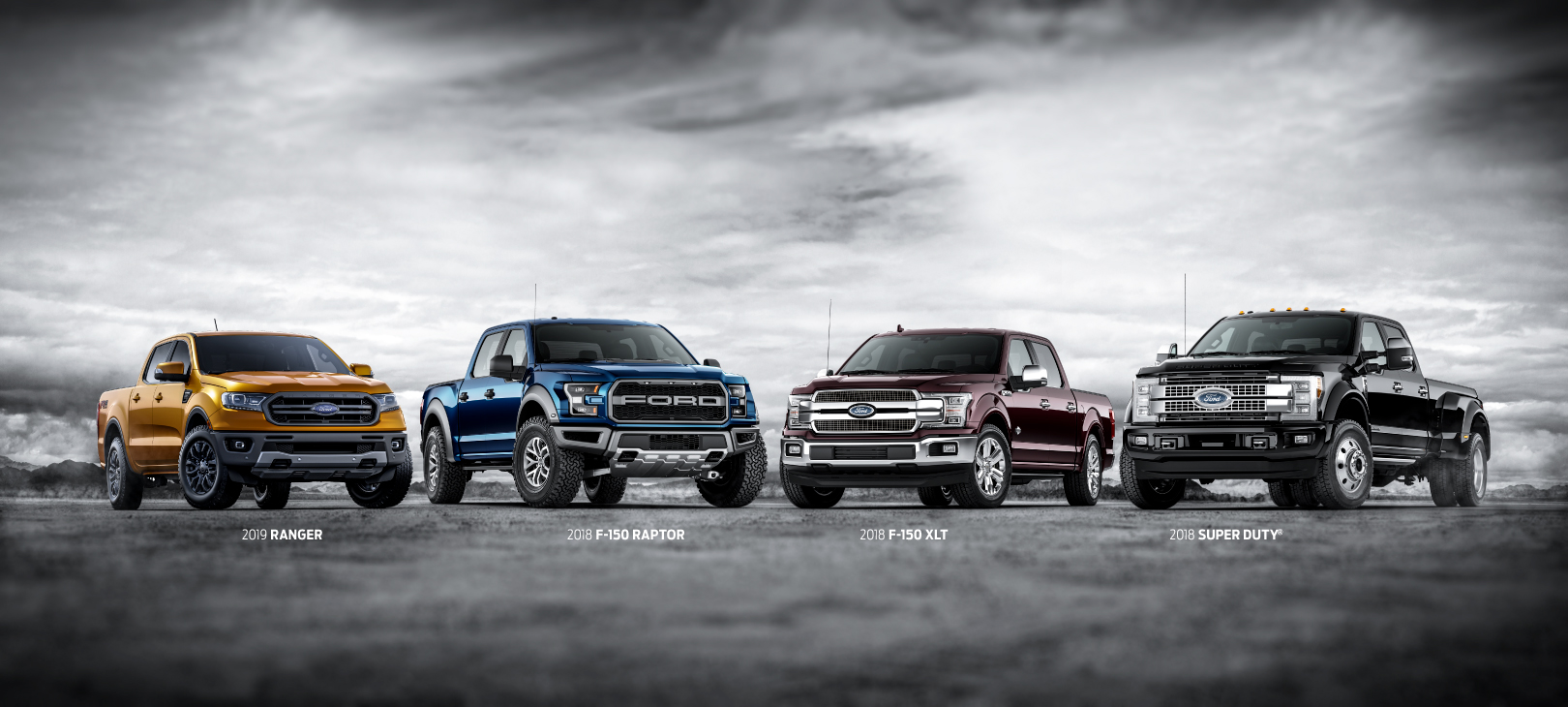New 2015 Ford F-150 Designed to Resist Fading & Combat Interior Glare
Though not always as apparent up in Michigan’s Pleasant Peninsula, the sun can have blistering effects on cars’ exteriors, and it can cause dangerous glaring issues – literally – for drivers.
One place where Ford Motor Co. aims to combat the power of the sun is on the new, 2015 Ford F-150’s logo and badge plates. The company is using a new acrylic material for its iconic Blue Oval and badges on the truck, and has tested the material in some 3,000 hours of simulated sun conditions at the company’s Central Lab in Florida.
The task of preserving the Blue Oval’s blue color is being led in part by Cindy McComb, Materials Engineer.
“Really the best material for weathering and impact is acrylic material,” she said. “The part we’re testing is a molded acrylic material that won’t peel, won’t fade. Really, the best part of acrylic is it has good characteristics for sunload.” McComb’s work prompted her to notice the sun-bleached badges of other cars on the road, which use aluminum or chrome-plated logos.
The three-piece badges for the 2015 F-150 were frozen to temperatures below 40 degrees Celsius then blasted with 100-degree-Celsius heat as part of their durability testing at Ford’s Central Lab.
Also at Ford’s Central Lab, where the automaker shares facilities with NASA, engineers have been working to reduce the effect of the sun’s glare in the F-150’s cockpit.
Cary Diehl, Human Factors Engineer, said that reducing glare for drivers involves examining every piece of the interior for its shape and shininess.
The company uses a planetarium-like dome that shines 6,000 watts of light on the truck and can simulate any kind of sunlight on earth.
“In some southern states, the sun is lower for longer periods of time,” Diehl said. “Sunlight will come in at side angles that we won’t ever see here in Michigan.”
Diehl said engineers have also learned to reduce glare on some of the cockpits’ chrome parts by adding curvature to them. “By adding curvature, we keep it from being a mirror,” he said.
At the same time, Diehl said the company has been combating glare on the central navigation screen.
They reduced direct glare by positioning the screen in a spot that’s within easy reach for the driver but still out of the sun’s path. And indirect glare – when the sun is shining bright in your truck and you can’t read the screen’s digital read out – has been reduced by picking a color pallet that provides the most contrast on the screen. Diehl explains the process further in a video below.
The 2015 Ford F-150 was unveiled at the 2013 North American International Auto Show in Detroit. The new full-size pickup – to be produced in Michigan and Missouri – is arguably one of the most important vehicles in decades. Besides F-Series being the best-selling vehicle in North America for 37 years, the nearly all-aluminum body of the F-150 pickup marks the introduction of aluminum vehicles to the general public.
In July, Ford announced the lighter-body pickup will weigh more than 700 pounds less than a comparable outgoing model, including a well-equipped Lariat crew cab 4×4 at a weight savings of roughly 732 pounds.




